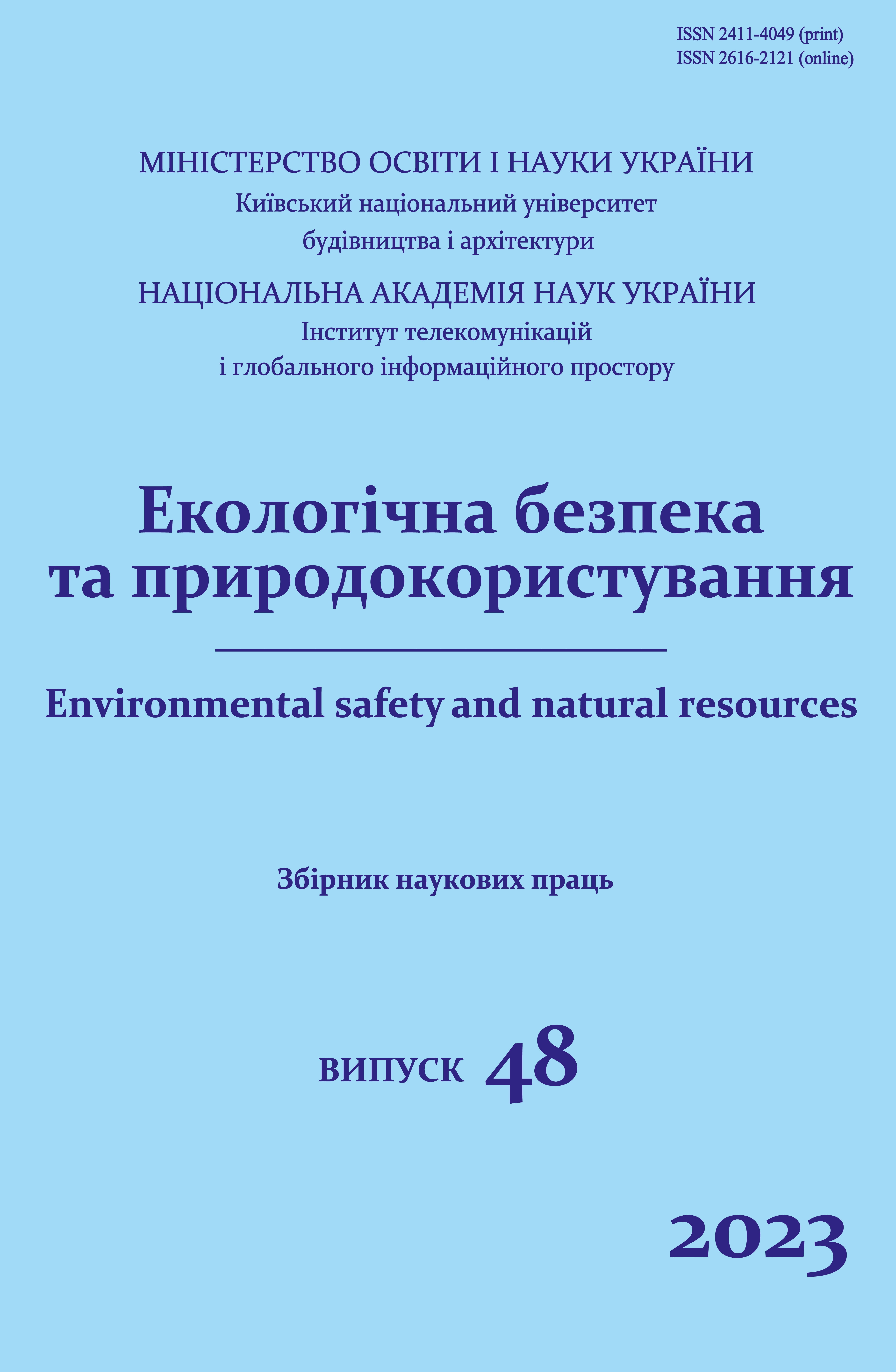Method of processing information about the state of the environment based on data obtained through a service-oriented network
DOI:
https://doi.org/10.32347/2411-4049.2023.4.117-129Keywords:
digital city, Internet of Things, LoRaWAN, monitoring, information convolution, request, information providerAbstract
The task of the work is to develop a method of processing information about the state of the environment based on data received from a service-oriented network based on energy-efficient long-range protocols. As an example of the implementation of the method, the LoRaWAN technology was chosen, which is used in the city of Kyiv, in particular, to ensure the operation of "Kyiv Digital" services.
The solution to the problem lies in finding such a processing method that allows you to present the data received from the transmitters as a set. From this multiplication, with the help of a special symbolic language, data is extracted from which a pool is formed to present information about events at the research object. The latter is proposed to be implemented through an information convolution where information is separated by levels depending on the end user's request. The resulting rollup is not saved, since the primary information remains in the system database and can be used for subsequent requests for analysis or comparison.
This can be used in systems working with big data to control the current state of information processing, create samples for intermediate calculations, statistical studies and generalizations of the state of processes whose action is not completed.
References
Musa, S. (2018). Smart Cities-A Road Map for Development. IEEE Potentials, 37 (2), 19–23. https://doi.org/10.1109/MPOT.2016.2566099
Gerhart, J. (1999). Home Automation & Wiring. McGraw-Hill/TAB Electronics. ISBN 978-0-07-024674-4.
Acharjya, D. P., & Geetha, M. K. (Eds.). (2017). Internet of things: Novel advances and envisioned applications. Springer International Publishing. ISBN 9783319534725.
Bell, М. (2010). SOA Modeling Patterns for Service-Oriented Discovery and Analysis. Wiley & Sons. ISBN 978-0-470-48197-4.
Davidson, J. D., & Coward, D. (1999). Java Servlet Specification ("Specification") Version: 2.2 Final Release. Sun Microsystems. pp. 43–46.
Thomas, J., Traukina, A. (2018). Industrial Internet Application Development: Simplify IIoT development using the elasticity of Public Cloud and Native Cloud Services. Packt Publishing. ISBN 978-1788298599.
Zhurakovskyi, B. Yu., & Zeniv, I.O. (2021). Tekhnolohii internetu rechei. Navchalnyi posibnyk. Kyiv: KPI im. Ihoria Sikorskoho [in Ukrainian].
Stephenson, W. D. (2018). The Future Is Smart: how your company can capitalize on the Internet of Things – and win in a connected economy. HarperCollins Leadership.
Maksymov, A., Vakhovych, I., Hutnichenko, T., Babicheva, P., Vakulenko, N., Iholnikova, N. et al. (2015). Enerhoefektyvnist v munitsypalnomu sektori. Navchalnyi posibnyk dlia posadovykh osib mistsevoho samovriaduvannia. Asotsiatsiia mist Ukrainy. Kyiv: TOV «Pidpryiemstvo «VI EN EI» [in Ukrainian].
Hoiko, A. F. (2009). Efektyvnist investuvannia rekonstruktsii i tekhnichnoho pereosnashchennia diiuchykh pidpryiemstv. Shliakhy pidvyshchennia efektyvnosti budivnytstva v umovakh formuvannia rynkovykh vidnosyn: zb. nauk.prats, 64-74 [in Ukrainian].
Enerhetychna stratehiia Ukrainy na period do 2030 roku. Retrieved from http://eircenter.com/images/Strategiya.pdf
Batty, M. et al. (2012). Smart Cities of the Future. European Physical Journal ST, 214, 481–518. https://doi.org/10.1140/epjst/e2012-01703-3
Raza, U., Kulkarni, P., & Sooriyabandara, M. (2017). Low power wide area networks: an overview. IEEE Commun. Surv. Tutor., 19 (2), 855–873, http://dx.doi.org/10.1109/COMST.2017.2652320
Kircher, M., & Prashant, J. (2002). Pooling Pattern. EuroPLoP. Germany. http://www.kircher-schwanninger.de/michael/publications/Pooling.pdf
Spellerberg, Ian F., & Fedor, Peter J. (2003). A tribute to Claude Shannon (1916–2001) and a plea for more rigorous use of species richness, species diversity and the 'Shannon–Wiener' Index. Global Ecology and Biogeography, 12 (3), 177–179. https://doi.org/10.1046/j.1466-822X.2003.00015.x
Chakrabarti, C. G., & Indranil, C. (2005). Shannon entropy: axiomatic characterization and application. International Journal of Mathematics and Mathematical Sciences, 2005.17: 2847-2854. https://arxiv.org/pdf/quant-ph/0511171.pdf
Pinker, S., & Jackendoff, R. (2005). The faculty of language: What's so special about it?. Cognition, 95 (2), 201–236. https://doi.org/10.1016/j.cognition.2004.08.004
Dovhyi, S. O., Bidiuk, P. I., Trofymchuk, O. M., & Savenkov, O. I. (2011). Metody prohnozuvannia v systemakh pidtrymky pryiniattia rishen. Kyiv: Azymut-Ukraina [in Ukrainian].
Hodges, A. (2012). Alan Turing: The Enigma (The Centenary ed.). Princeton University Press. ISBN 978-0-691-15564-7.
Downloads
Published
How to Cite
Issue
Section
License
Copyright (c) 2023 Trofymchuk O.M., Itskovych V.Ye.

This work is licensed under a Creative Commons Attribution 4.0 International License.
The journal «Environmental safety and natural resources» works under Creative Commons Attribution 4.0 International (CC BY 4.0).
The licensing policy is compatible with the overwhelming majority of open access and archiving policies.

